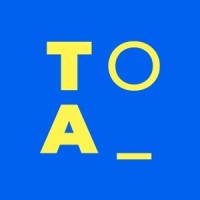
Ontario Computer Animation and Special Effects Tax Credit (OCASE)
At a glance
- Minimum amount : 25,000 $
- Up to 18% of project cost
- Unspecified
- Arts, entertainment and recreation
- Ontario
- For-profit business
- All revenue ranges
- All organization sizes
- Canadians
Overview
Refundable tax credit of 18% on local Ontario labour costs related to the creation of computer animation and special effects for use in film and television.
Activities funded
- Production of computer animation for eligible film or television productions.
- Creation of visual effects using digital technologies for eligible film or television productions.
- Undertaking animation or visual effects projects intended for commercial exploitation via theatrical distribution, television broadcast, or online platforms.
Eligibility
- The applicant must be a Canadian corporation, which can be Canadian- or foreign-owned.
- The corporation must have a permanent establishment in Ontario and file an Ontario corporate tax return.
- The corporation must perform eligible computer animation or special effects activities in Ontario, directly in support of an eligible film or television production, or under contract with the producer of an eligible production.
- The production must be created for commercial exploitation and not fall under excluded genres.
- The corporation must incur eligible Ontario labour expenditures for the qualifying activities performed in Ontario.
Who is eligible?
- Animation companies
- Visual effects (VFX) houses
- Post-production houses
- Film and television production companies
- 3D service providers working under contract to a production’s producer
Who is not eligible
- Companies producing content in excluded genres, such as news, current events, public affairs programming, weather or market reports, talk shows, game shows, sports events, galas or awards shows, fundraising productions, reality television, pornography, advertising, or productions primarily for industrial, corporate, or institutional purposes.
- Companies producing instructional or educational content not directed at children under 12 (for productions commencing animation or visual effects activities on or after March 26, 2024).
- Companies focused on user-generated content, vlogs, travelogues, music videos, eSports, gaming, gambling productions, pranks, speeches, sermons, presentations, discourse, conference or event coverage, or productions based primarily on stock footage or previously released content (for productions commencing on or after March 26, 2024).
- Companies controlled, directly or indirectly, by corporations that are exempt from tax under Part II of the Corporations Tax Act (Ontario), or classified as labour-sponsored venture capital corporations as defined in the Income Tax Act (Canada).
Eligible expenses
- Salaries and wages paid to employees directly attributable to eligible computer animation and special effects activities carried out in Ontario.
- Remuneration paid to freelancers (individuals, partnerships, or arm’s-length incorporated individuals such as loan-out corporations) for work on eligible computer animation and special effects activities.
- Remuneration paid to eligible partnerships for personally undertaking eligible activities, or for employees of those partnerships for personally undertaking eligible activities.
- Remuneration paid to loan-out corporations (taxable Canadian corporations wholly owned by the individual providing the services) for eligible activities personally undertaken in Ontario.
Eligible geographic areas
- Ontario
Selection criteria
- The OCASE Tax Credit is based on eligible Ontario labour expenditures incurred by a qualifying corporation during a taxation year with respect to eligible computer animation and special effects activities. - The tax credit amount is calculated as 18% of the eligible Ontario labour expenditures incurred by the qualifying corporation. - Eligible productions must be created for commercial exploitation and have received an OFTTC or OPSTC certificate to be eligible for the OCASE tax credit. - Eligible activities include designing, modelling, rendering, lighting, painting, animating, and compositing directly in support of eligible animation or visual effects. - Qualifying labour expenditures include salaries, wages, and payments to freelancers for eligible activities carried out in Ontario. - The OCASE Tax Credit is administered jointly by Ontario Creates and the Canada Revenue Agency. - Application for the Certificate of Eligibility is made to Ontario Creates, which is then filed with the Canada Revenue Agency for claiming the tax credit. - Residency status is important in determining eligible labour expenditures for the tax credit. - Assistance in the form of grants, subsidies, and forgivable loans may grind the tax credit amount. - Crowdfunding may be considered assistance depending on the model used. - If a product/production is found to be ineligible, the applicant may be required to withdraw it from review. - Applicants can appeal the amount of tax credit received through the CRA's objections and appeals process. - For more information or assistance, applicants can contact the tax credit department at Ontario Creates.
How to apply
Determine Eligibility and Prepare Documents
- Verify that your corporation is a qualifying corporation as per OCASE guidelines.
- Ensure all eligible computer animation and special effects activities are completed.
- Gather necessary documentation including, but not limited to, incorporation documents, contracts, production schedules, and detailed descriptions of the animation or visual effects process.
Calculate Eligible Expenditures
- Calculate 18% of the eligible Ontario labour expenditures incurred for the relevant taxation year.
- Prepare a breakdown of eligible Ontario labour expenditures for each production.
Complete Application Form
- Access the Ontario Creates Online Application Portal (OAP) to start your application.
- Fill out the OCASE Tax Credit Application, ensuring all sections are complete and accurate.
- Upload all required supporting documents through the OAP.
Pay Administration Fee
- Calculate the administration fee based on 0.15% of eligible expenditures, with a minimum of $500 and a maximum of $10,000.
- Submit the administration fee via Interac e-Transfer or another approved payment method.
Submit Application
- Review your application for completeness and accuracy.
- Submit your completed application before the end of the corporation’s taxation year.
Await and Respond to Communication
- Check for any correspondence from Ontario Creates regarding your application status.
- Provide additional information or documentation if requested.
- Monitor CRA assessments and refund status.
Filing with CRA
- Once you receive the Certificate of Eligibility, submit it with your corporate tax return to the CRA.
- Use CRA’s online tools for secure submission and confirmation if available.
Additional information
- The OCASE Tax Credit is refundable and is administered jointly by Ontario Creates and the Canada Revenue Agency (CRA).
- An administration fee of 0.15% of eligible expenditures applies to each application, with a minimum of $500 and a maximum of $10,000 per application.
- Additional fees are imposed for certificates of eligibility filed more than 24 months after year-end and for amended certificates ($100 per occurrence).
- Assistance (such as grants, subsidies, and forgivable loans) may reduce the amount of the tax credit; crowdfunding treated as donations can also be considered assistance.
Contacts
Frequently Asked Questions about the Ontario Computer Animation and Special Effects Tax Credit (OCASE) Program
What is the Ontario Computer Animation and Special Effects Tax Credit (OCASE)?
How much funding can be received?
What expenses are eligible under Ontario Computer Animation and Special Effects Tax Credit (OCASE)?
What is the deadline to apply?
Is the Ontario Computer Animation and Special Effects Tax Credit (OCASE) a grant, loan, or tax credit?
Who are the financial supporters of the Ontario Computer Animation and Special Effects Tax Credit (OCASE)?
Who is eligible for the Ontario Computer Animation and Special Effects Tax Credit (OCASE) program?
Who can I contact for more information about the Ontario Computer Animation and Special Effects Tax Credit (OCASE)?
Where is the Ontario Computer Animation and Special Effects Tax Credit (OCASE) available?
More programs like this

Rural Economic Development program — Economic Diversification and Competitiveness Stream
Government of Ontario
Indigenous Arts Projects
Toronto Arts Council (TAO)
FedNor — Economic Development Initiative (EDI)
Federal Economic Development Agency for Northern Ontario (FedNor)
OAC — Visual Artists Creation Projects
Ontario Arts Council (OAC)
OAC — Deaf and Disability Arts Projects
Ontario Arts Council (OAC)
Black Arts Projects
Toronto Arts Council (TAO)
Ottawa — Tourism Accessibility Fund (TAF)
City of Ottawa
OAC — Multi and Inter-Arts Projects
Ontario Arts Council (OAC)
OAC — Francophone arts service organizations – operations
Ontario Arts Council (OAC)